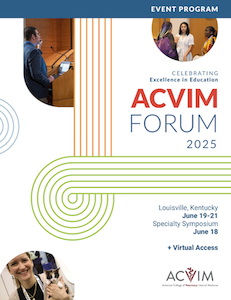Cardiology
(C36) Computer-Generated 3D Models in Veterinary Student Education: Improving Radiographic Interpretation of Canine Congenital Heart Disease
Thursday, June 19, 2025
5:30 PM - 7:00 PM ET
Location: Exhibit Hall Poster Park - Poster Stand

Alexandria Goodyear, M.S. (she/her/hers)
Veterinary Student
University of Georgia
Athens, GA, United States
Research Abstract - Physical Poster Presenter(s)
Abstract:
Background: Thoracic radiographic interpretation of congenital heart disease (CHD) is challenging for veterinary students, particularly when translating three-dimensional (3D) anatomic structures into two-dimensional (2D) images. This study evaluates the effectiveness of virtual 3D models in enhancing student interpretation of thoracic radiographs.
Hypothesis: 3D models will improve students' spatial and anatomical understanding of healthy and CHD radiographs compared to traditional 2D methods.
Animals: Three client-owned dogs diagnosed with patent ductus arteriosus, pulmonary valve stenosis, and a healthy control, were enrolled.
Methods: Computed tomography angiography datasets were used to create 3D cardiac models using Materialise software. Virtual models were overlaid onto each corresponding dog’s thoracic radiographs. A workshop was conducted with third- and fourth-year veterinary students, divided into two interactive learning groups; 2D traditional methods vs. virtual 3D models with radiographic overlays. Pre- and post-workshop multiple-choice tests and Likert scale surveys assessed the objective and subjective radiographic interpretation and CHD understanding.
Results: Thirty students participated in the workshop. Mean overall pre-test score was 67.9, and mean post-test score was 87.5 (p < 0.001). Mean percentage increase in pre to post workshop test scores was 16.8 and 22.1 in the 2D and 3D groups, respectively; however, the difference in score improvement between the groups was not significant (p =0.42). Feedback was generally positive with participants preferring 3D over 2D resources.
Conclusions and Clinical Importance: Both traditional and 3D methods improved students' ability to interpret thoracic radiographs in dogs. Participants preferred 3D resources, highlighting their potential as a valuable adjunct tool in veterinary education.
Background: Thoracic radiographic interpretation of congenital heart disease (CHD) is challenging for veterinary students, particularly when translating three-dimensional (3D) anatomic structures into two-dimensional (2D) images. This study evaluates the effectiveness of virtual 3D models in enhancing student interpretation of thoracic radiographs.
Hypothesis: 3D models will improve students' spatial and anatomical understanding of healthy and CHD radiographs compared to traditional 2D methods.
Animals: Three client-owned dogs diagnosed with patent ductus arteriosus, pulmonary valve stenosis, and a healthy control, were enrolled.
Methods: Computed tomography angiography datasets were used to create 3D cardiac models using Materialise software. Virtual models were overlaid onto each corresponding dog’s thoracic radiographs. A workshop was conducted with third- and fourth-year veterinary students, divided into two interactive learning groups; 2D traditional methods vs. virtual 3D models with radiographic overlays. Pre- and post-workshop multiple-choice tests and Likert scale surveys assessed the objective and subjective radiographic interpretation and CHD understanding.
Results: Thirty students participated in the workshop. Mean overall pre-test score was 67.9, and mean post-test score was 87.5 (p < 0.001). Mean percentage increase in pre to post workshop test scores was 16.8 and 22.1 in the 2D and 3D groups, respectively; however, the difference in score improvement between the groups was not significant (p =0.42). Feedback was generally positive with participants preferring 3D over 2D resources.
Conclusions and Clinical Importance: Both traditional and 3D methods improved students' ability to interpret thoracic radiographs in dogs. Participants preferred 3D resources, highlighting their potential as a valuable adjunct tool in veterinary education.


